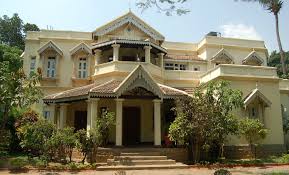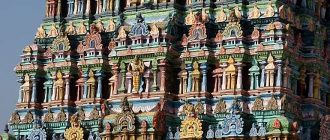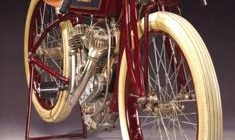Want to find an Indian bungalow design? Read on to discover the basics of Indian bungalow designs and their origins…
Indian bungalow designs are characteristic of the colonial houses and living quarters in India. The word bungalow actually originates from the Indian term Bangla which denotes cottages with thatched roofs and low ceilings and these are surrounded by porches. This style was translated into mainstream Indian architecture when the British used this to create their vacation homes.
These homes were usually one story and had large porches, hanging eaves and fireplaces fitted with proper chimneys. This style of Indian bungalow design is very eco-friendly, creates a charming atmosphere and looks extremely good. If the porch did not run all around the house then it was supplemented with a verandah and used efficient cooling and heating systems for eco-friendly and efficient ventilation.
Basic Elements of the Indian Bungalow Design
Most commonly the design followed for an Indian Bungalow was created by a central verandah that was enclosed on both sides with living rooms. Apart from this the use of pillars around the entrance and hallways and high French doors was very common. These French doors had glazing bars that were reinforced with shutters and broad louvers which could be adjusted for different heights and allowed for better ventilation.
Some of the Indian bungalow designs replaced the thatched roofing with flat roofs. Apart from this the general layout of the Indian bungalow was a rectangle or T-shaped floor plan which allowed for the rectangular or square living rooms which made the maximum use of space without angular wastage of space.
The kitchen, dairy and other work areas like servant quarters and rooms for livestock were often located in a secluded section of the house. The main focus of the house would be the verandah, living room or the main courtyard. Generally, the verandah and porch were created out of the roof extending into the open space and often coming to within six to eight feet off the ground.
Climatic control was achieved by the use of broad passageways, windows covered with thick blinds and walls constructed out of cool stone. Huge fans were often fixed on the ceiling or in old days without electricity the fans were created out of straw and a piece of rope was tied to edge to be pulled by anyone who required ventilation.
Evolution of the Indian bungalow design
This basic one-story Indian bungalow design has evolved into a two-story structure with a pyramid type roof. The basic principles remain the same and living space is utilized to the maximum. But the actual design makes for a sprawling layout which is comfortable to navigate and cool to live in during the summers and warm and cozy during the winters.
The elements like pillars, chimneys and fireplaces are utilized to create space that is functional and flows with energy. In fact, the lower section of the house is utilized for socializing and visit by outsiders. The upper story is converted into a living area and bedrooms for the family to ensure privacy. No matter how huge or small the Indian bungalow is, the space is never wasted and does not feel cold and uninviting.





